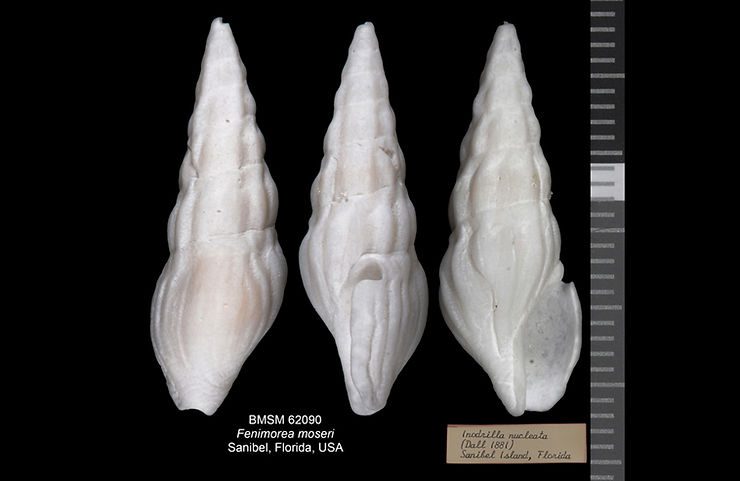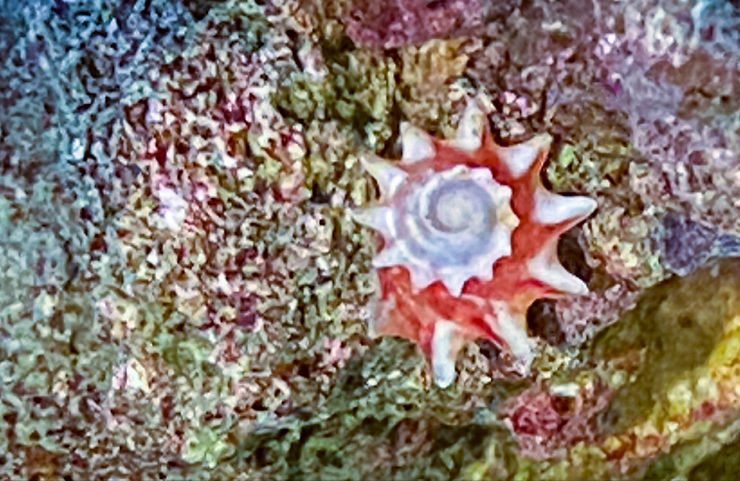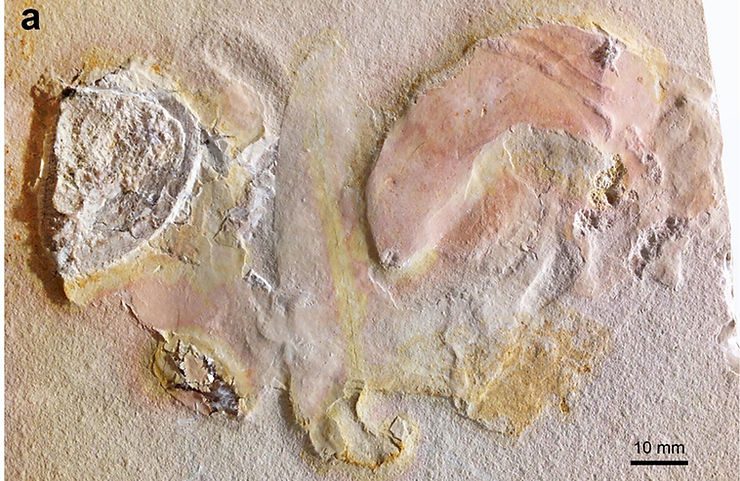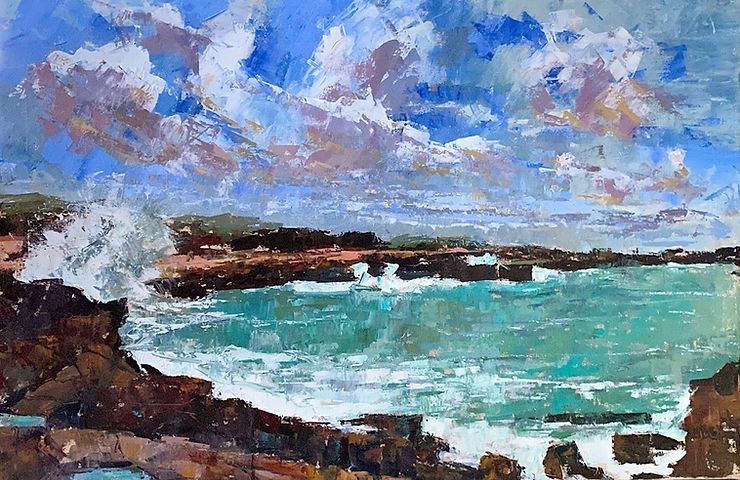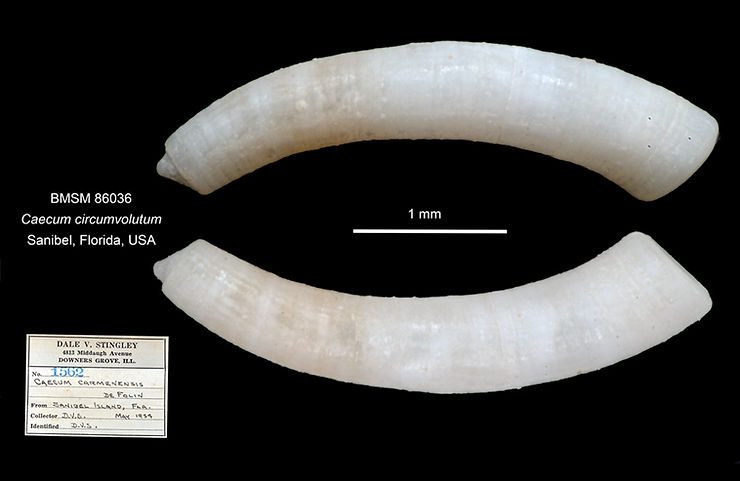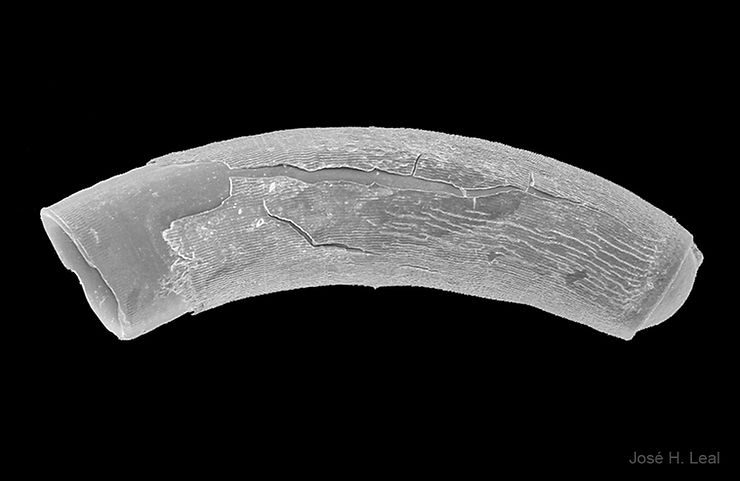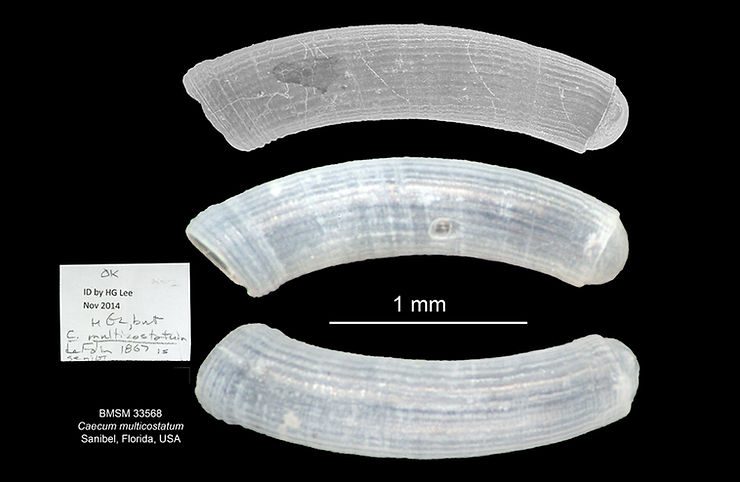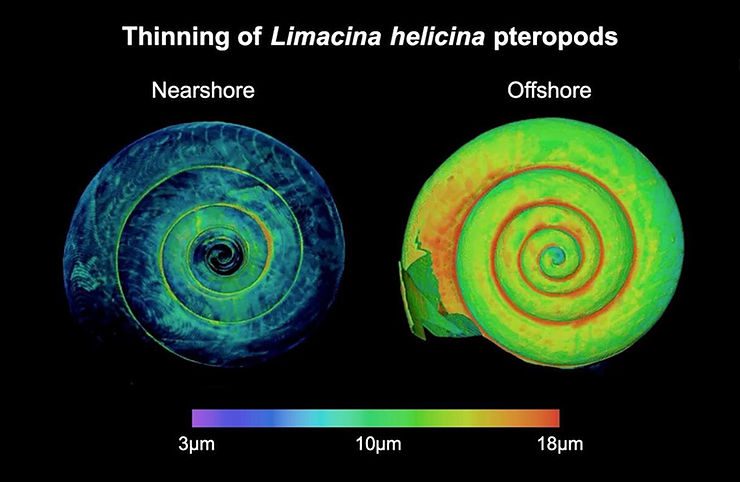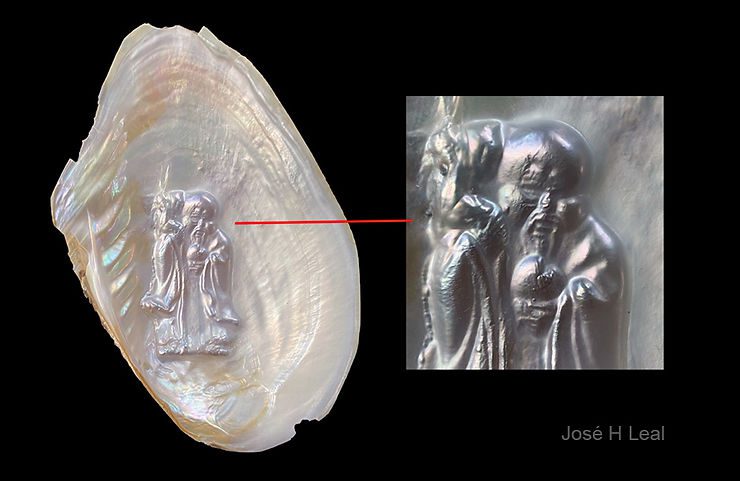
Cultural Pearls
One of the most intriguing entries in the Museum collection is a single valve, or half-shell, of a freshwater Cockscomb Pearl Mussel, Cristaria plicata. Most freshwater bivalves have a hefty, internal layer of nacre on their shells. But in this case, the inside of the valve is embellished with a two-inch tall figurine, a "cultural pearl," or “pearl image,” of a long-bearded Chinese Sage. In historic China, such items were bestowed or sold to pilgrims visiting sacred shrines. In the old days, a p
